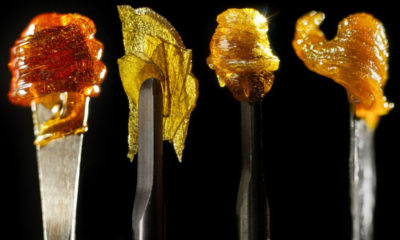Case Study: Colorado 5 Years After Legalization
The data from the country’s first recreational state paints a positive picture.
Colorado legalized recreational marijuana in 2012 and became the first state in modern times to oversee legal sales when shops opened at start of 2014. With four years in the books, what do we know about the first experiment with legal cannabis in modern America? In examining the state’s records, it appears that little has changed outside of the rise of a prominent, legal industry and the swell of tax dollars it has produced.
Looking at public health data, one can barely find any indication that the public health sphere has changed in recent years. Cannabis use rates have seen a gradual increase over time in the state, but have actually held quite steady since 2014, with about 13.6 percent of adults saying they have used cannabis in the last month. Youth surveys have shown fluctuating rates from 2005 to 2015, but overall, Colorado youth enjoy marijuana at almost exactly the national average of 21 percent. Poison center calls related to marijuana increased shortly after legalization, then dropped back down but are still higher than they were pre-legalization, according to Daniel Vigil, program manager for Colorado’s Marijuana Health Monitoring and Research Program.
As for other substances, alcohol and tobacco use has held steady in adults but declined dramatically in teens since 2005. This trend continued without change through cannabis legalization. In 2015, teen tobacco use dropped to 8.6 percent, just under half of what it was in 2005. Sadly, the same is not the case for opioids — like the rest of the nation, Colorado is struggling with increased opioid use. Opioid-related deaths tripled in the state from 2000 to 2015 from 1.9 to 5.8 per 100,000. However, this appears to be unconnected to cannabis legalization.
Crime and traffic data is a little more peculiar. While marijuana arrests in general are about half what they were in 2012, arrests for serious cannabis crimes — which generally involve participation in the black market with large quantities of bud — have crept back up from 2014 and are at a nine year high, according to Jack Reed, a statistical analyst with Colorado’s Office of Research and Statistics.
It is difficult to say whether this rise in arrests is the result of increased illegal activity, namely producing and transporting cannabis across state lines to deal elsewhere, or increased police activity targeting the black market. Either way, it is clear that black market activity is still quite robust in Colorado, and that law enforcement is focused on these crimes. African Americans are still being arrested three as often as whites or Hispanics.
Other than that, there are no trends in crime data starting in 2014 that weren’t visible prior to legalization. Criminal activity has not changed for better or for worse.
Traffic fatalities where cannabinoids were detected in the driver have increased each year since 2013.The numbers here do seem to suggest an uptick in high driving, but cannabinoids can stay in the system for days or even weeks after use, depending on the user.
While Oregon’s medical marijuana market has struggled since the state legalized in 2012, Colorado’s medical cannabis program has continued to hum along with no real change since recreational sales began. Medical card holders must reapply each year, and they have continued to do so; about 100,000 medical cards were administered each of the last three years, a trend that has held for the last decade, Vigil said.
Recreational marijuana has been a financial boon to Colorado. Revenues have jumped each year from $67.6 million in 2014, to $130.4 million the next year up to $193.6 million in 2016. The sales tax on retail marijuana and marijuana products increased from 10 to 15 percent in July 2017, so the windfall is expected to increase in the near term.
But perhaps the most important question is whether Coloradans are happy with the decision they made back in 2012. A recent poll by Public Policy Polling shows that, indeed, they are.
Half of Coloradans say that recreational marijuana has been good for the state and another 9 percent say it has had no real impact. Only 37 percent disapproved of the change and 6 percent said they weren’t sure. On the economic effects, 61 percent of those surveyed said that legalization has been a positive force, while only 19 percent described it as a negative.
The public support for recreational legalization makes sense. Little has changed other than the legitimizing of a legal market, with the regulation and tax windfall one would expect from this happening. The steady usage rates show that cannabis was already woven into Colorado culture, and legalization didn’t alter this one way or another. While the story of legal marijuana in Colorado is incomplete, the early data suggests that legalization is largely the legitimization of what’s happening already.
Originally published in Issue 29 of Cannabis Now. LEARN MORE
TELL US, have you experienced cannabis in Colorado?























